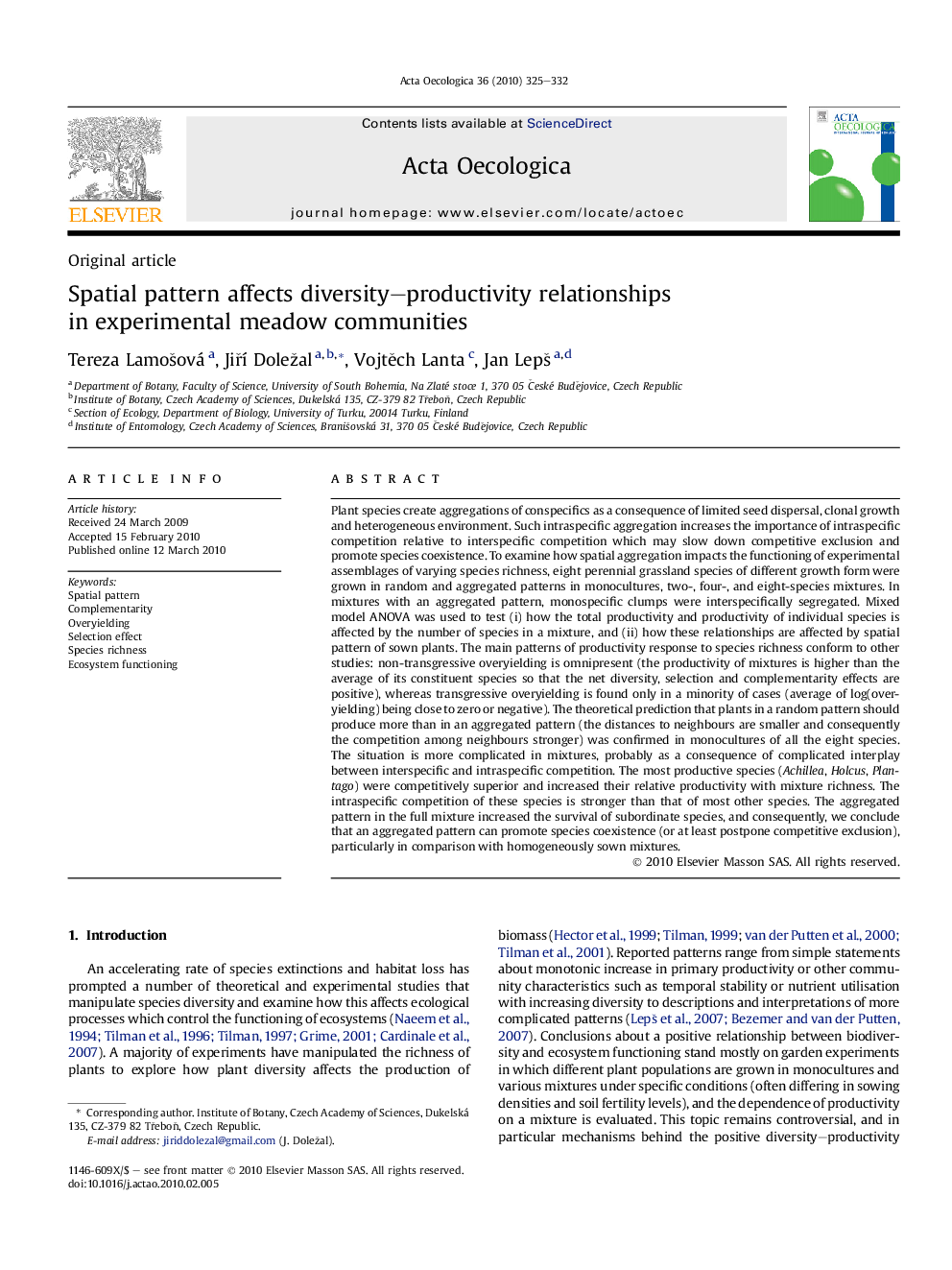| Article ID | Journal | Published Year | Pages | File Type |
|---|---|---|---|---|
| 4381333 | Acta Oecologica | 2010 | 8 Pages |
Abstract
Plant species create aggregations of conspecifics as a consequence of limited seed dispersal, clonal growth and heterogeneous environment. Such intraspecific aggregation increases the importance of intraspecific competition relative to interspecific competition which may slow down competitive exclusion and promote species coexistence. To examine how spatial aggregation impacts the functioning of experimental assemblages of varying species richness, eight perennial grassland species of different growth form were grown in random and aggregated patterns in monocultures, two-, four-, and eight-species mixtures. In mixtures with an aggregated pattern, monospecific clumps were interspecifically segregated. Mixed model ANOVA was used to test (i) how the total productivity and productivity of individual species is affected by the number of species in a mixture, and (ii) how these relationships are affected by spatial pattern of sown plants. The main patterns of productivity response to species richness conform to other studies: non-transgressive overyielding is omnipresent (the productivity of mixtures is higher than the average of its constituent species so that the net diversity, selection and complementarity effects are positive), whereas transgressive overyielding is found only in a minority of cases (average of log(overyielding) being close to zero or negative). The theoretical prediction that plants in a random pattern should produce more than in an aggregated pattern (the distances to neighbours are smaller and consequently the competition among neighbours stronger) was confirmed in monocultures of all the eight species. The situation is more complicated in mixtures, probably as a consequence of complicated interplay between interspecific and intraspecific competition. The most productive species (Achillea, Holcus, Plantago) were competitively superior and increased their relative productivity with mixture richness. The intraspecific competition of these species is stronger than that of most other species. The aggregated pattern in the full mixture increased the survival of subordinate species, and consequently, we conclude that an aggregated pattern can promote species coexistence (or at least postpone competitive exclusion), particularly in comparison with homogeneously sown mixtures.
Keywords
Related Topics
Life Sciences
Agricultural and Biological Sciences
Ecology, Evolution, Behavior and Systematics
Authors
Tereza LamoÅ¡ová, JiÅà Doležal, VojtÄch Lanta, Jan LepÅ¡,
